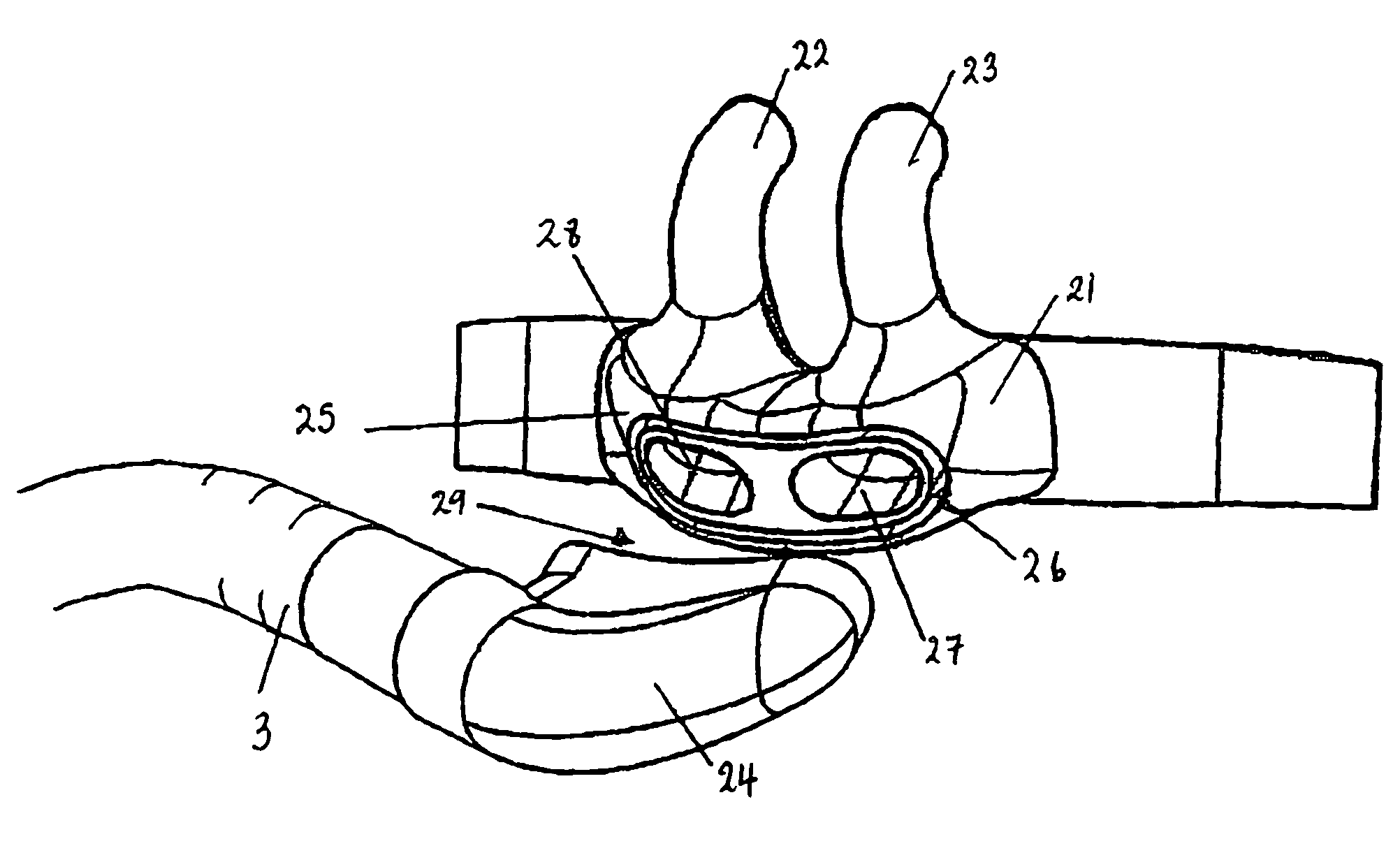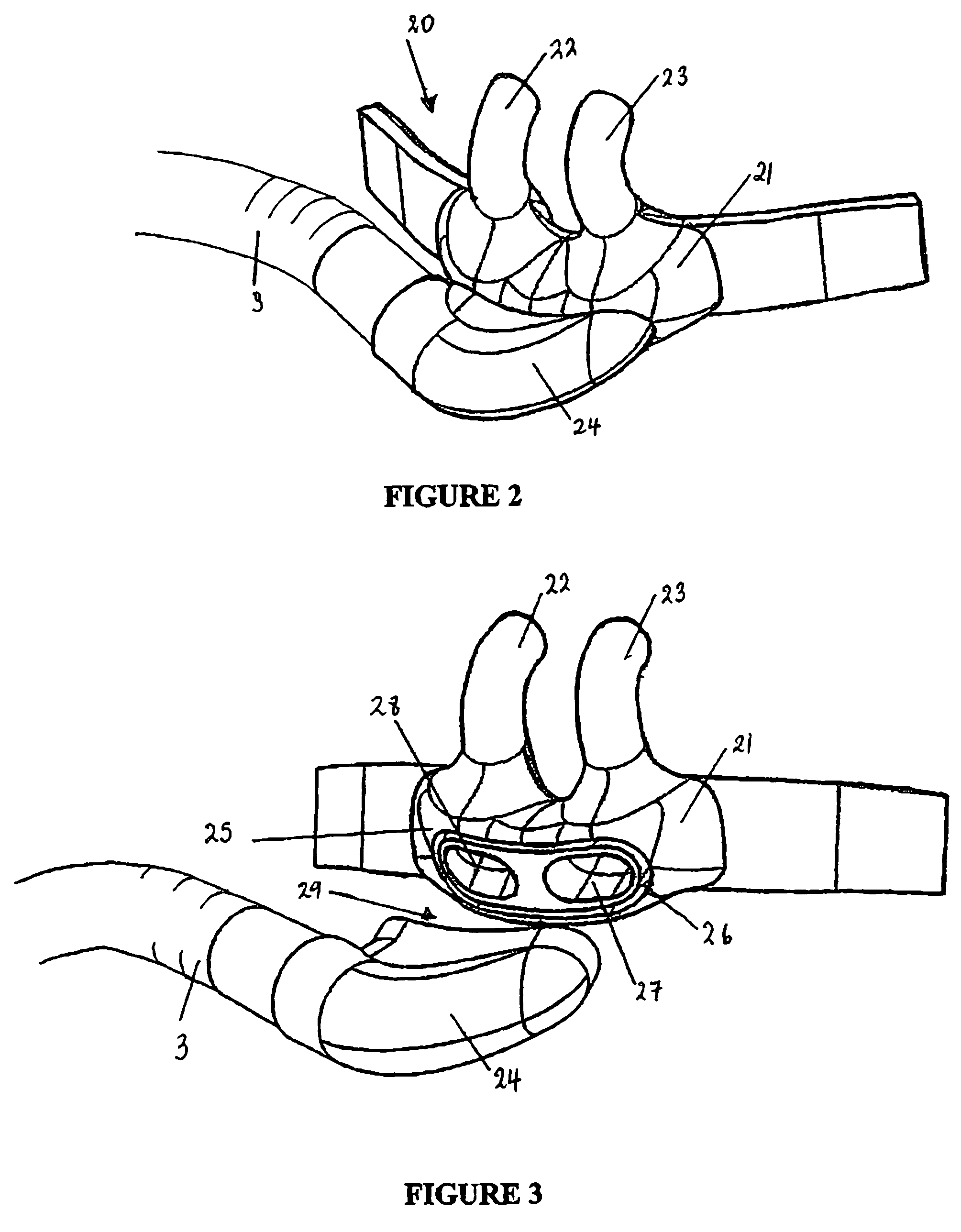Breathing assistance apparatus
- Summary
- Abstract
- Description
- Claims
- Application Information
AI Technical Summary
Benefits of technology
Problems solved by technology
Method used
Image
Examples
Embodiment Construction
[0039]Whether used in a hospital environment or in a home environment, the nasal cannula assembly of the present invention will generally have associated three main pieces of apparatus. Firstly an active humidifier that controls the temperature of a heater plate heating a body of water to achieve a desired temperature and humidity of the gases being humidified. Secondly a transport conduit from the humidifier to the patient is also required, which is preferably heated to reduce condensation, or “rain out”. Thirdly a nasal cannula designed to fit into the nasal cavity of a patient or user and deliver humidified, pressurized gases.
[0040]Referring to FIG. 1 a humidifying circuit as might be used with the nasal cannula of the present invention is shown. A patient 1 is receiving humidified and pressurized gases through a nasal cannula 20 connected to a humidified gases transportation pathway or inspiratory conduit 3 that in turn is connected to a humidifier 8 (including humidification ch...
PUM
 Login to View More
Login to View More Abstract
Description
Claims
Application Information
 Login to View More
Login to View More - R&D
- Intellectual Property
- Life Sciences
- Materials
- Tech Scout
- Unparalleled Data Quality
- Higher Quality Content
- 60% Fewer Hallucinations
Browse by: Latest US Patents, China's latest patents, Technical Efficacy Thesaurus, Application Domain, Technology Topic, Popular Technical Reports.
© 2025 PatSnap. All rights reserved.Legal|Privacy policy|Modern Slavery Act Transparency Statement|Sitemap|About US| Contact US: help@patsnap.com



